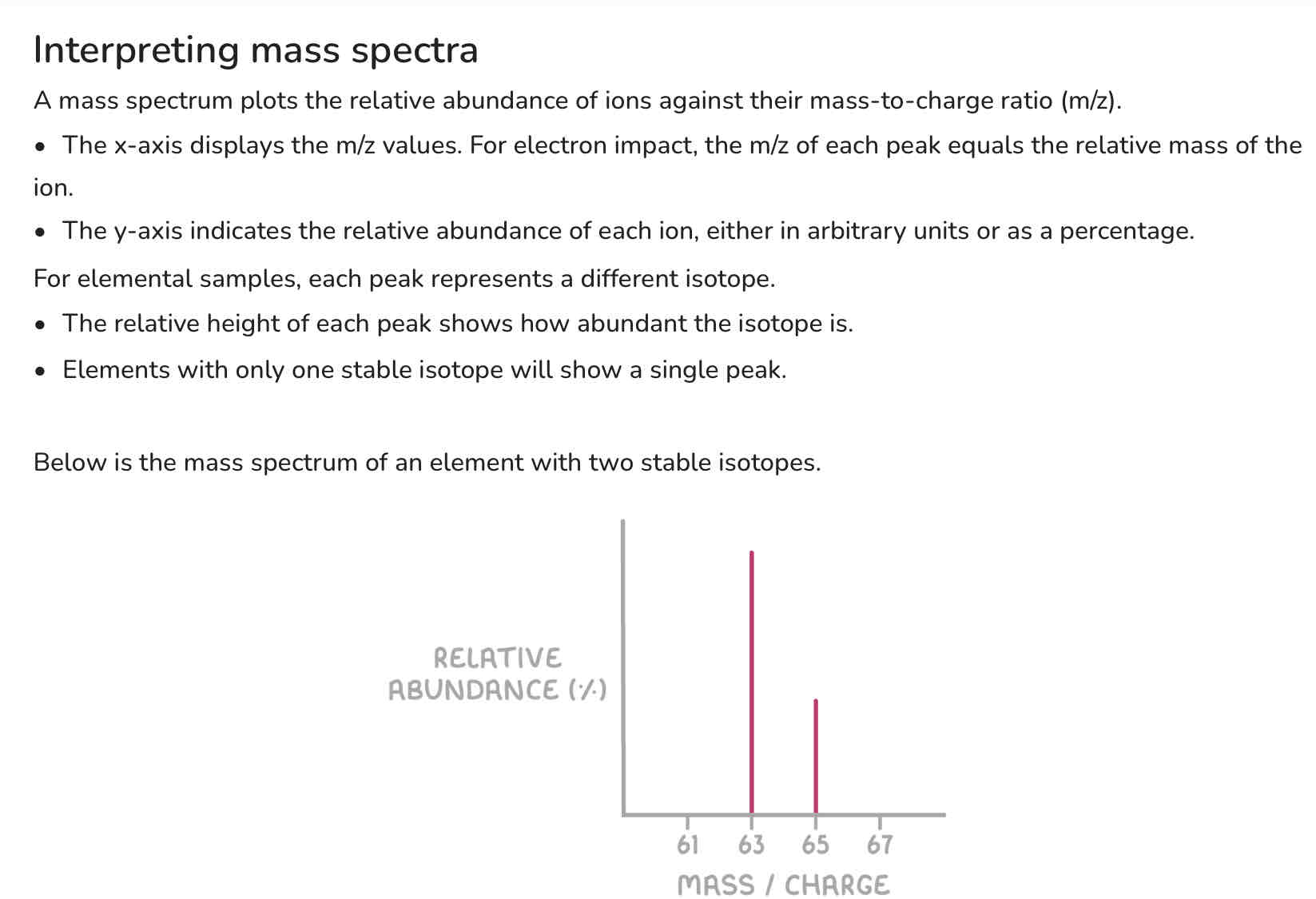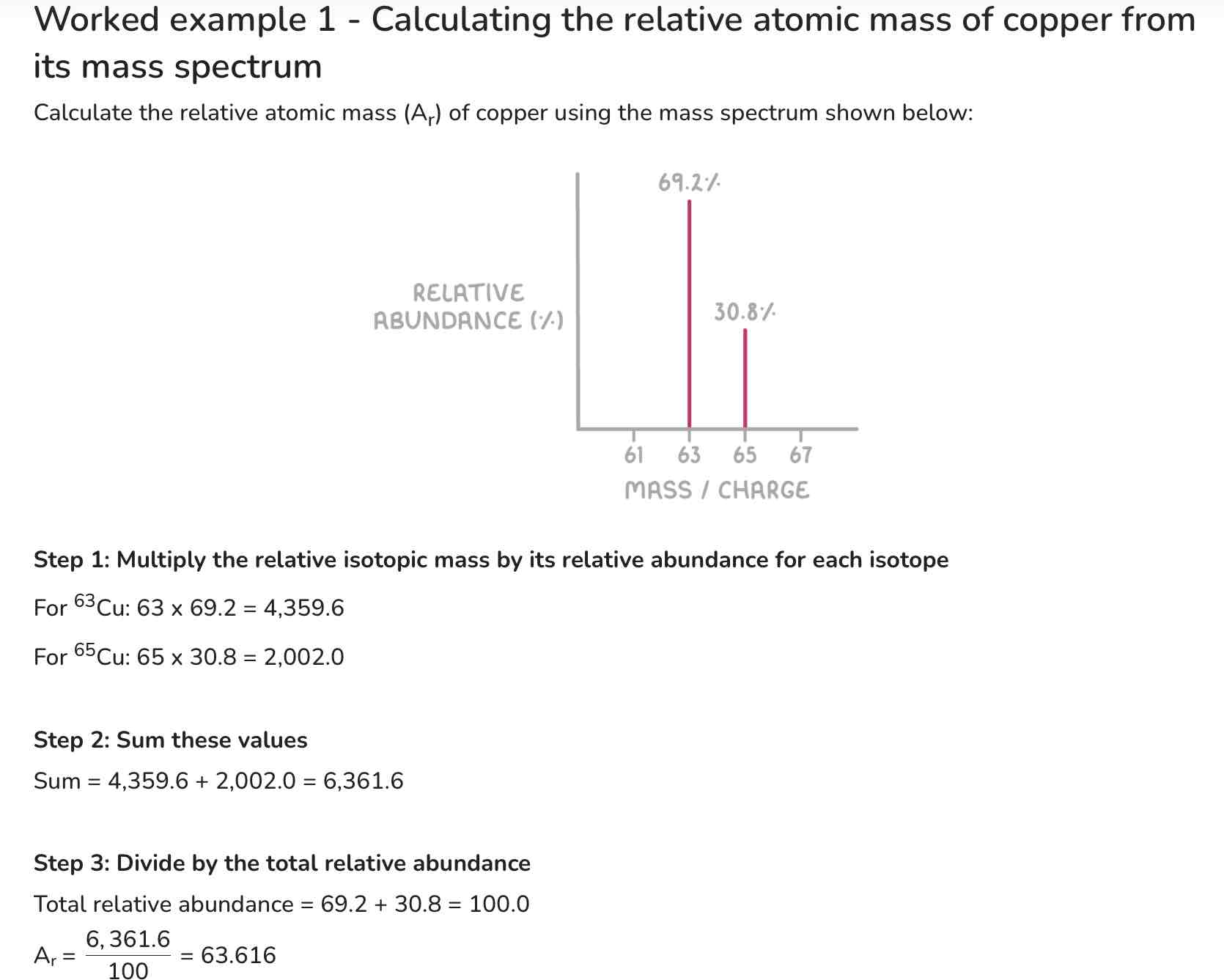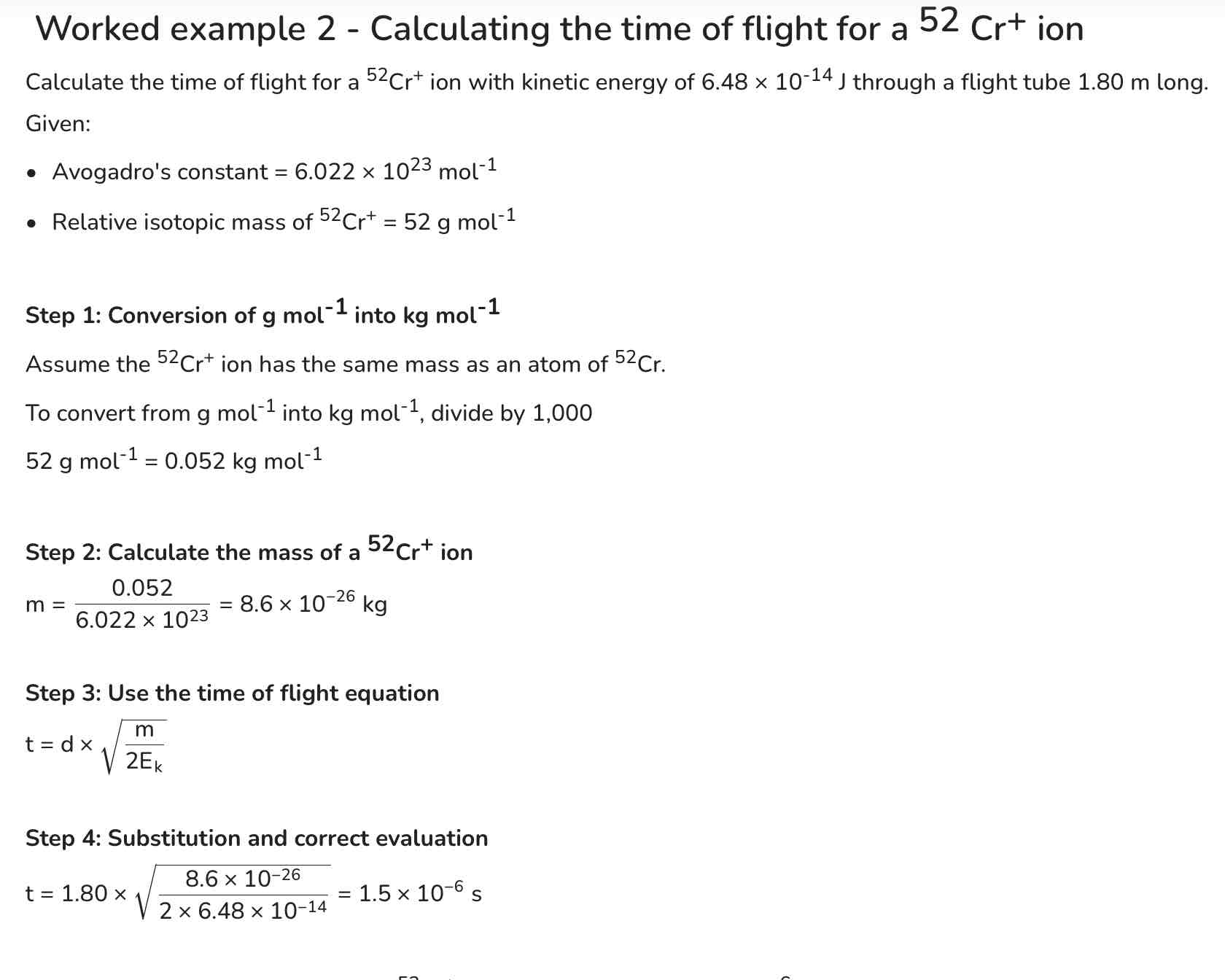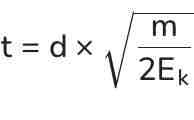Mass Spectrometer
A mass spectrometer is an analytical tool used to measure the mass-to-charge ratio (m/z) of ions.
The time-of-flight (TOF) mass spectrometer is one commonly used type. It determines the m/z of ions based on how long they take to travel from the ion source to the detector.
A TOF mass spectrometer includes four main parts:
Ionisation - This process turns the sample into positive gaseous ions. There are two common methods of ionisation:
Electron impact → involves bombarding the vaporised sample with high-energy electrons to remove an electron from each molecule, resulting in +1 ions.
Electrospray ionisation → involves dissolving the sample in a volatile solvent and spraying it through a charged needle, which adds an H+ ion from the solvent to each molecule.
Acceleration - The positively charged ions are accelerated towards a negatively charged plate by an electric field, giving them identical kinetic energy. This means lighter ions will move faster than heavier ones.
Ion drift - The ions enter a flight tube where they drift at a steady speed related to their mass. Lighter ions, having lower m/z ratios, move through the tube quicker and reach the detector sooner than heavier ions.
Detection - As ions hit the detector, they gain an electron which creates an electric current. The size of this current is proportional to the abundance of each isotope, with more abundant isotopes producing larger currents.


In a TOF mass spectrometer, the duration an ion takes to reach the detector is calculated using the flight tube's length and the ion's kinetic energy as it enters the tube.
With all ions having identical kinetic energy as they enter the flight tube, their time of flight (t) is calculable via:
Where:
t = time of flight (s)
d = length of flight tube (m)
Ek = kinetic energy (J)
m = mass of ion (kg)

